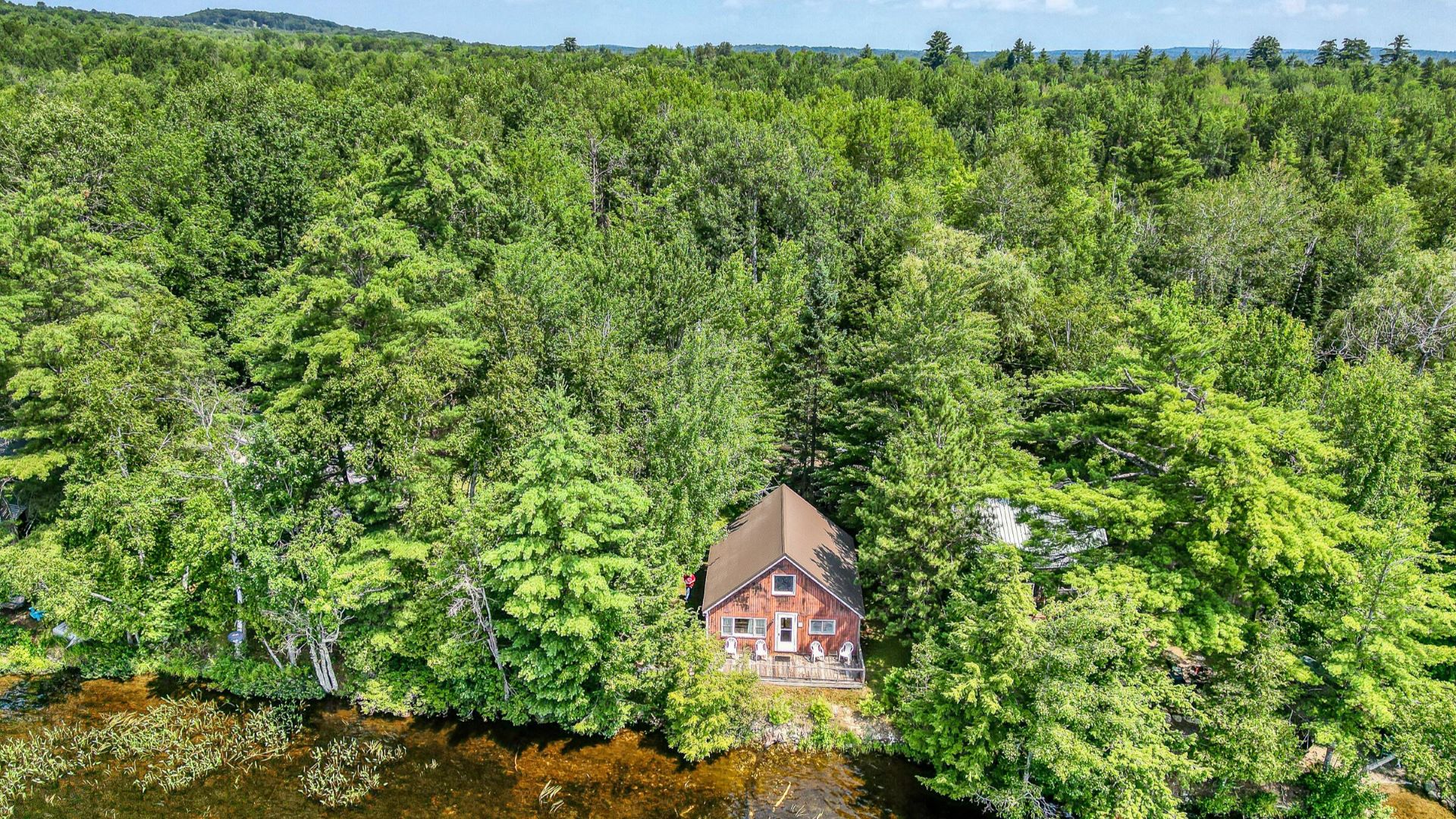This time of year, and the fall to come, seem to me to be the best seasons for heading “upta camp” in Maine. These are the typically rustic, often unheated three-season cabins that pervade our lakesides, coasts and woods.
If you’re a camp owner, maybe you’ve been dreaming about the kind of year-round modernization made popular on shows like “Maine Cabin Masters” — making your camp livable in the winter, or comfortable in any season with a new heating or cooling system. But how do you do it sustainably and efficiently?
The answer likely lies beyond the rustic tools of the humble camp that are familiar to most — things like the propane-powered “buddy heaters” used by one family in Calais, who I met while reporting my Hooked on Heating Oil series, to save on oil at their year-round house.
Maine’s climate plan emphasizes electrification, renewable energy and energy efficiency in retrofits and new construction to help decarbonize our state’s energy system and lower its costs. Camps could be a big part of this effort.
Maine, Vermont and New Hampshire have the country’s highest rates of “seasonal, recreational or occasional-use” housing — units set aside for weekend or seasonal use, including hunting cabins, beach cottages, timeshare condos and more — out of the homes that are technically considered “vacant,” according to 2017 to 2021 averages from the U.S. Census Bureau.
Green & Healthy Maine Homes Magazine dug into sustainable camp conversions in a recent article, and I did some more research to offer a handful of key tips.
The biggest takeaway: Hire professionals to help you design a holistic, thoughtful retrofit. The experts the magazine spoke with said you may especially need outside counsel on issues like zoning, structural concerns, water service and other utilities.
They also urged camp converters to invest in a permanent foundation to extend their cottage’s longevity and stability. A good foundation supports energy efficiency — uninsulated open space beneath the home, or direct contact with the ground, can waste a lot of heat much like a drafty basement or ill-fitting windows. Some contractors say the foundation and its walls should both be insulated to reduce heat loss.
As in any building, good insulation everywhere will help you get more out of any energy systems you add to your camp. Builders told Green Maine Homes that they’ll look to create a tight building envelope with good moisture control.
This process may also include new doors and windows. Some builders also said they consider the potential carbon footprint of different materials when weatherizing a camp.
“If the building is not going to be fully occupied, I would not waste up-front carbon emissions on foam insulation or other materials with high levels of embodied carbon,” Palermo-based designer Michael Maines told the magazine. “I would only use foam when other materials can’t do the job effectively (or cost-effectively).”
“Embodied carbon” is a useful umbrella term for all the emissions generated by a product through “every stage of its life: the creation, transportation, installation, and use,” according to Efficiency Vermont, which is that state’s equivalent of Maine’s similarly named energy rebating authority.
In that guide released last year, the Vermont agency recommended wood-fiber or cellulose insulation (also made from wood and plants) as your best bets for low environmental impact. You can even get Maine-made wood insulation from a company called TimberHP, which cut the ribbon in July on a new manufacturing facility at a former paper mill in Madison.
If your camp has electricity or you’re planning to wire it up, you might be thinking about adding a heating or cooling system. Make sure to seek out an energy audit if so.
Take the example of one camp made year-round in Camden, featured in the Boothbay Register in 2015. It was found to be 3.5 times leakier in ventilation terms than it should have been, with an unfettered exchange of interior and exterior air that meant the owner “had to heat the house from scratch every 50 minutes.”
The conversion project, this 2015 report said, cut this home’s energy use and costs in half with air sealing and insulation.
As for what specific HVAC system to install, that’s also a question of costs and footprint. In Green Homes, some experts suggested putting in a heat pump — potentially a great option in a smallish, open-concept structure, where one unit will go a long way to keeping you cool in the summers and warm in the winters.
They recommended a wood stove as a backup to mitigate power outages and high electricity costs in the very coldest weather, which can now be part of your camp experience. A wood stove is also an ideal heat source if you decide to forego electricity in your newly year-round camp.
To move further off the grid, you could also consider renewable energy systems such as solar power to generate your own electricity.
Check out our tipsheets on home heating here and here for resources to help pay for all of these upgrades, but there’s a big caveat: Many tax incentives and other public subsidies only apply to your primary residence, the one where you live most of the time.
So unless you’re planning to move into your new year-round camp full time, you may have to pay mostly out of pocket for your conversion project.
One final note: As you build to ensure generations of year-round enjoyment at your camp, consider how Maine’s seasons and other factors are changing with the climate. Are increasingly heavy rains and tepid winters causing more flooding or washouts nearby?
If you’re on the coast, have you checked the sea level rise maps and budgeted for flood insurance? And are you sure you won’t need air conditioning in the hotter years to come? Talk with those experts you’ve hired to ensure your camp is resilient and adaptable.







